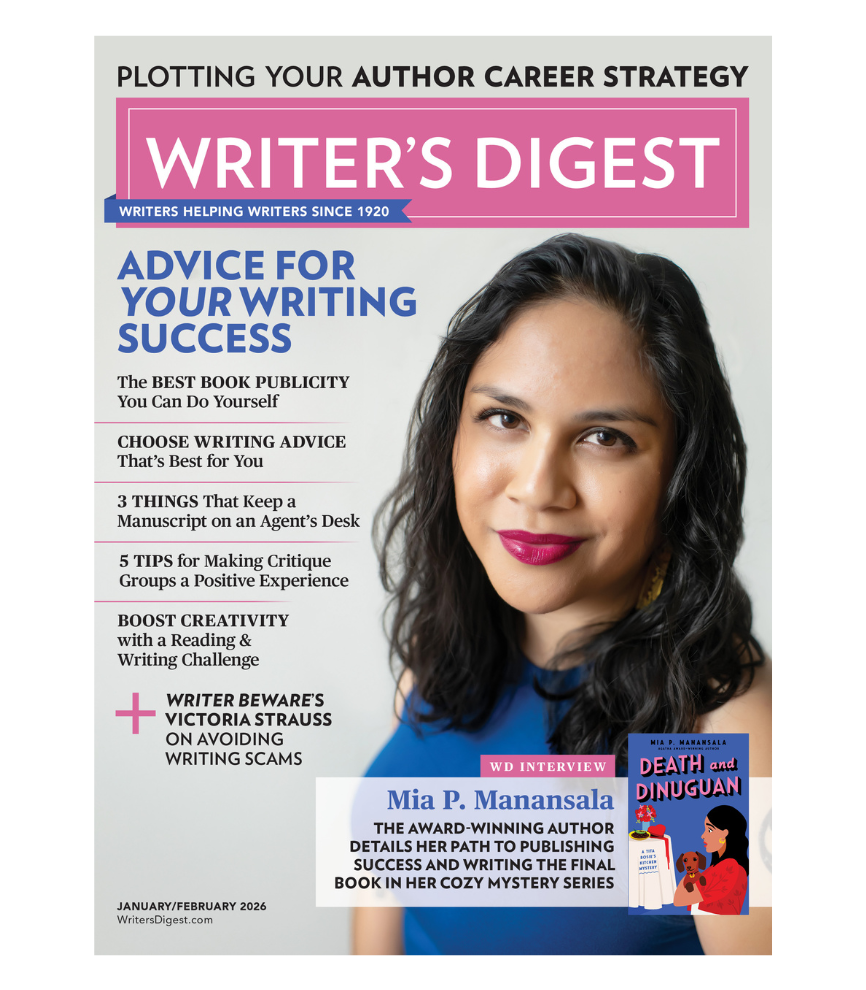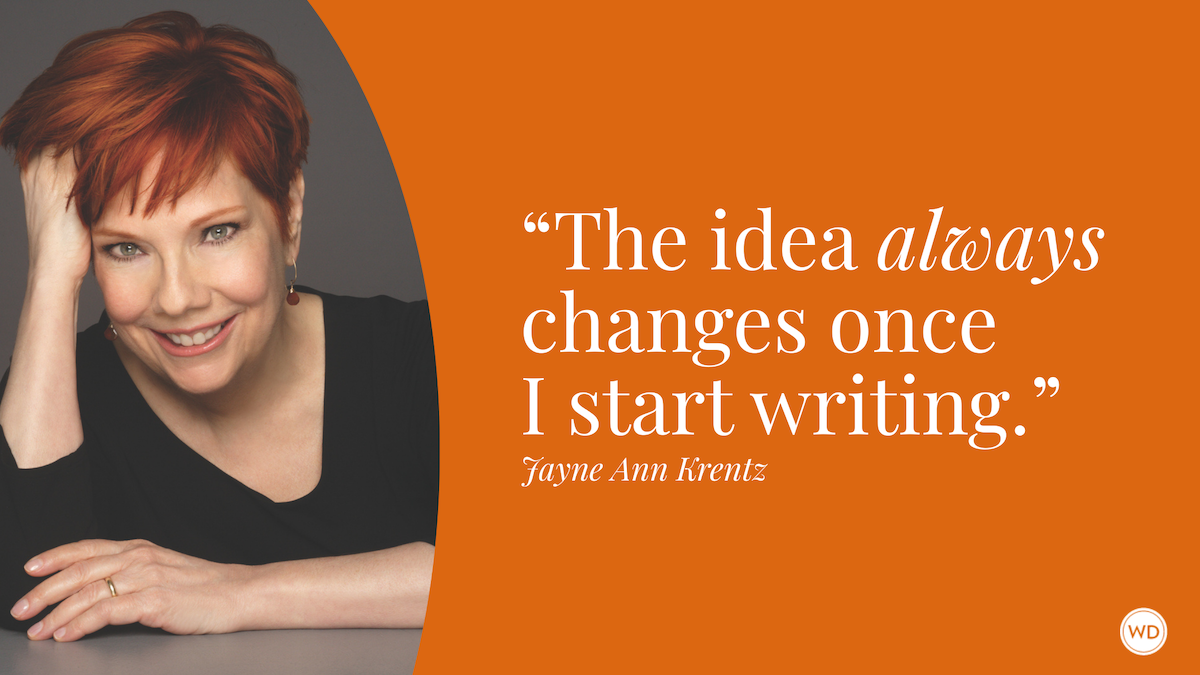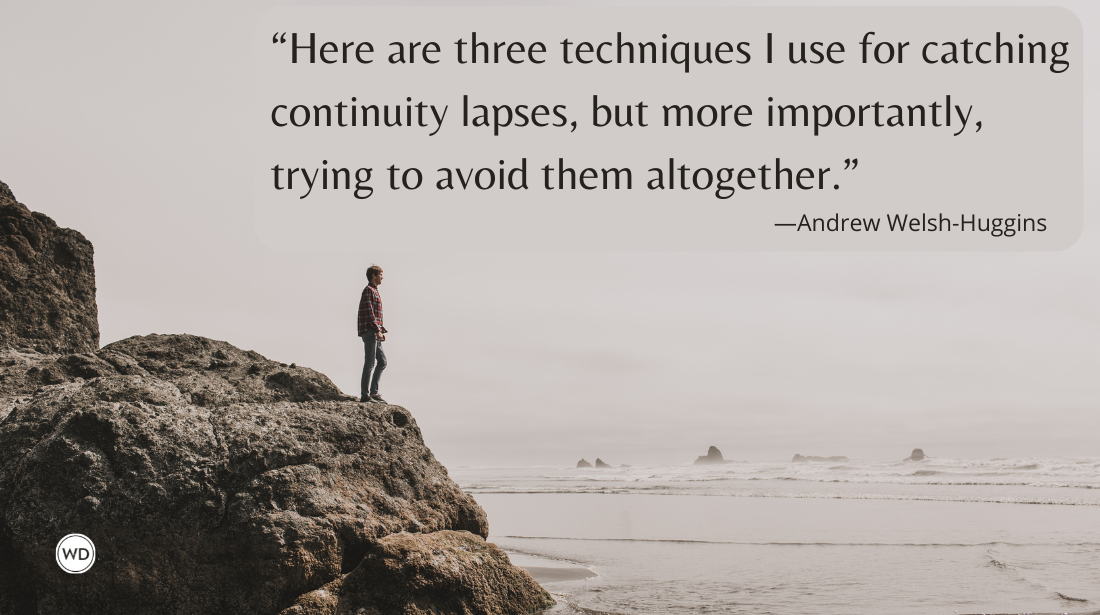A Thriller Writer’s Guide to TV/Movie Viewing
Looking outside of novels for inspiration can take your drafts into surprising and refreshing directions. Here, USA Today bestselling author Carter Wilson shares five TV and movie viewings to inspire thriller writers.
(Editor’s Note: Below are spoilers for “Succession,” Silence of the Lambs, True Romance, “Bo Burnham: Make Happy,” and Se7en.)
I get asked a lot about from what other writers I draw inspiration. Sure, I always have my go-to answers (Stephen King, I'm looking at you), but I never get asked about which TV shows or movies inspire my writing. Truth is, there's no lack of amazing monologue/dialogue scenes on the screen that make me take notice, and since I tend to write from a cinematic mindset, these scenes can really inform how I approach my own writing.
Here are five big-and-little-screen examples of elevating suspense above the ordinary, and how they will help you with your own storytelling. Please note the following may contain spoilers.
1) “Succession”: "All the Bells Say"
Did I mention there may be spoilers? Well, this is the most contemporary show in my list, so if you haven't seen it—and want to—skip to my next example, Silence of the Lambs (and you most certainly should have seen that by now).
In the final episode of "Succession" season 3, Kendall Roy tearfully admits to his siblings his involvement in the accidental death of a waiter at his sister Shiv's wedding. It's a brutal, emotional scene, and Kendall breaks open his soul as he collapses into a sobbing heap. His siblings Shiv and Roman listen on in mostly shocked silence, when, while in the most uncomfortable pregnant pause one can imagine, Roman says, "No wonder I had such a hard time getting a drink that day."
How this scene informs your writing: Are you kidding me? Roman's line was as unexpected and darkly funny as they come, and it worked beautifully to reveal his discomfort with a serious situation and provided much-needed relief to the audience. That one line was as effective for character development as an entire book chapter could be. Don't be afraid to inject dark humor into your dark stories, but make sure your one-liners aren't there just for laughs. Jokes are often defense mechanisms, and the use of them should be telling your readers something about your quip-making characters.
Bonus tip: Don't overdo your use of humor, and avoid dialogue tags at all costs. Also, watch "Succession" for its consistently outstanding writing.
2) Silence of the Lambs: Clarice and Hannibal meet
Claire Starling and Hannibal Lecter meet for the first time at his prison cell. She's looking for his expertise in helping track down a serial killer, and he is much more interested in psychoanalyzing her.
How this scene informs your writing: This scene is lauded as a masterwork in visual storytelling (and it is), but watch it and think about how you would convey the mood/tone/unspoken moments through writing. There's a fantastic opportunity in the set up as Clarice walks through the dark, dank, scream-filled prison hallway, luring readers to expect the worst. But in Hannibal Lecter she discovers someone calm, focused, soft-spoken, and completely in control. His ability to stand still, make eye contact, and gently smile while speaking is horrifying because it's so out of contrast with his environment. Lead your readers to an expectation and then abruptly take them somewhere else, but be consistent doing so. If your villain is all over the place in mannerisms your readers will get bored.
Bonus tip: In setting the tone for a creepy location (like Hannibal's cell), don't forget about smell. Smell is such a powerful way to evoke unease and yet it's underused in most thrillers. And the smell doesn't have to be a bad one ... what if Clarice smells flowers in that hopeless prison block but can't identity the source? That's creepy in its own right.
IndieBound | Bookshop | Amazon
[WD uses affiliate links.]
3) True Romance: "Am I Lying?"
In a scene in the 1993 cult classic (written by Quentin Tarantino), Dennis Hopper—a working class dad—faces off with mobster Christopher Walken inside Hopper's double-wide. It's hard to watch due to the racial slurs, but Hopper gives Walken a dubious history lesson on the racial evolution of Sicilians, knowing that by telling the story he's signed his own death warrant.
How this scene informs your writing: This is a scene of beautiful dialogue, and on paper any writer would be doing a disservice to the dialogue by adding a lot of movement, reaction, or observation. If your dialogue is this good—especially in a heart-pounding scene—let it stand on its own. Avoid internal observations, weighty descriptions of how the characters are staring at each other, and even too many attributions. Go for very short and subtle lines to break the pacing if you want, but avoid overdoing it.
Bonus tip: Think about space in your tension-filled scenes. Where is your protagonist standing? How close are the walls? Can you create a sense of dread simply by having them in a small room? In the above example, Hopper and Walken are in a trailer, and as the tension mounts that trailer starts to feel an awful lot like a coffin.
4) “Bo Burnham: Make Happy”
OK, this is a comedy special, which may feel out of place here. But I'm a huge believer that comedy performances can teach a thriller writer much about pace and timing. In this 2016 Netflix special, Burnham mixes brilliant and dark exposition with original songs to keep the audience guessing where he's going to go next.
How this scene informs your writing: Burnham admits to how much time he puts into rehearsing and editing his work, and the result is a sharp and visceral performance that seems effortless. When you're ready to start editing your work, challenge yourself with every sentence. Read each one out loud. Are these the best words to convey the mood or action? How can I make this shorter and more powerful? Are the beats just right to speed up or slow down the moment? Lazy writers don't like to take this challenge, and it IS a lot of work. But if you're honest with yourself, you'll know that the real story comes alive in the editing, and only by critical rewriting can you really take your story to the next level. In my thriller The New Neighbor, writing my second draft was a painful process because I took the time to be honest with myself, and even though it was a long slog, the resulting edits made the book really shine.
Bonus tip: Like everything, take editing in moderation. If you're the type to write 10 drafts before showing your work to anyone, you might be risking losing some of your subconscious genius. It takes time to develop the knack for knowing what sucks and what doesn't suck about your own work, but don't be afraid to admit when your writing is great. It probably won't happen a lot.
5) Se7en: "What's in the box?" (MAJOR SPOILER)
This 90's classic thriller spends much of the time showcasing the gruesome and grisly, but the climax (and most horrifying scene of all) relies on implied violence for its gut punch.
How this scene informs your writing: So you're ready to write that amazing double-homicide scene you've been looking forward to. Okay, I get it. But ask yourself, how graphic do I need to be? And how much more unnerving could it be if I focus on, say, the reaction of someone watching the violence rather than the violence itself? In David Fincher's film, the implied violence in the box scene was so strong that audiences were convinced they actually saw Gwyneth Paltrow's severed head, when in fact it never appears on-camera. In my thriller The Dead Husband, I had a scene in which two cops discuss finding a random dog that had been killed. I never established the dog as a character, never showed it being killed. But the implied violence was enough to generate much rage on Goodreads, with trigger warnings exclaiming WARNING: EXTREME ANIMAL TORTURE AND VIOLENCE. See? Implied violence can be just as effective—if not more so—than taking your readers through all the blood and guts.
Bonus tip: Don't kill the dog.
Carter Wilson is the USA Today bestselling author of nine critically acclaimed, standalone psychological thrillers. He is an ITW Thriller Award finalist, a five-time winner of the Colorado Book Award, and his works have been optioned for television and film. Carter lives outside of Boulder, Colorado. Dynamic and compelling, he now hosts his own podcast, Making It Up, interviewing authors like S.A. Cosby, Daniel Handler, Stuart Turton, Xio Axelrod, and Julie Clark to talk shop and riff an original story live. The result is a charming, authentic peek into the writing process. (Photo credit: Iliana Wilson)









